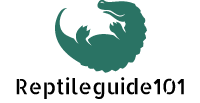Bearded dragons belong to the lizard family of the genus Pogona. They get their name from their appearance—they look like dragons with beards. The Pogona lizards are commonly found in Australia’s semi-desert areas and open woodlands. Just like most lizards, they are fond of climbing. The Pogona dragons are expert climbers, especially on rocks, tree branches, and bushes.
Because these critters are exotic, adaptive, and easy to keep in captivity, people have domesticated them either to keep as pets or for display purposes. The Pogona vitticeps (also known as the Central or Inland Bearded Dragon), in particular, is the most commonly kept pet among the bearded dragons, being a very friendly and calm species. Here are some useful tips on taking care of bearded dragons.
Housing
Young hatchlings have a length of about 10 to 15 inches. A twenty-gallon glass tank can adequately house such hatchlings. But, since bearded dragons grow quickly (up to an average of about 20 inches in length as adults), you might want to house them in a breeder tank with a capacity not less than 40 gallons. The bigger space will give the lizards enough room to run around. Cover the tank with a screen lid instead of glass or wooden lids. Screen lids will allow air to come in and out freely from the tank and will also keep humidity from piling up inside the tank.
Decors
Bearded dragons are climbers in their natural habitats. Therefore, you might want to include decors that simulate such an environment. A good suggestion for decors inside the aquarium would be rocks and tree branches. Another important piece that the bearded dragon will need is a good hiding place. For this, you can set up a rock cave made up of smooth rocks. Whatever fixtures you add into your tank, make sure they are firmly set in place and won’t go tumbling down and injure your bearded dragon.
Cool and warm sides
Bearded dragons love to bask in warm areas. Set up your tank so that it has a warm area for basking and a cooler area. The cool area (simulating the temperature of a shaded spot in the lizard’s natural habitat) should be around 30 degrees Celsius during the day. The basking area’s temperature should be kept between 35 and 43 degrees Celsius. To make the temperatures stable, you can use ceramic heat emitters, or a reptile-specific basking light, or just a plain incandescent bulb. You may also want to consider installing an undertank heater for use during winter nights.
Flooring or substrate
For hatchlings, never use loose substrate, as hatchlings can easily mistake it for food and can place their lives at risk. For either hatchlings or adult bearded dragons, the recommended flooring would be a reptile carpet, although butcher paper, newspaper, or paper towels will also do.
Diet
As omnivores, bearded dragons eat both plants and animals. As a matter of fact, your bearded dragons will get by with just crickets and greens in their diet. Feed hatchlings twice or thrice a day. Serve them as many crickets as they can eat within 5 to 10 minutes. Serve greens to your lizards, too. Once your lizard has reached adulthood, you only need to feed it once a day. Adult bearded dragons can enjoy a variety of meals besides crickets. You can feed adult lizards with cockroaches, locusts, and various types of worms. Never feed backyard insets and bugs (especially lightning bugs) to your lizard. Keep a shallow dish of fresh water inside the tank.
Provided you take care of your hatchling’s basic needs, it should grow into a healthy adult bearded dragon. Just keep in mind the tips discussed in this article for proper handling of your bearded dragon.

